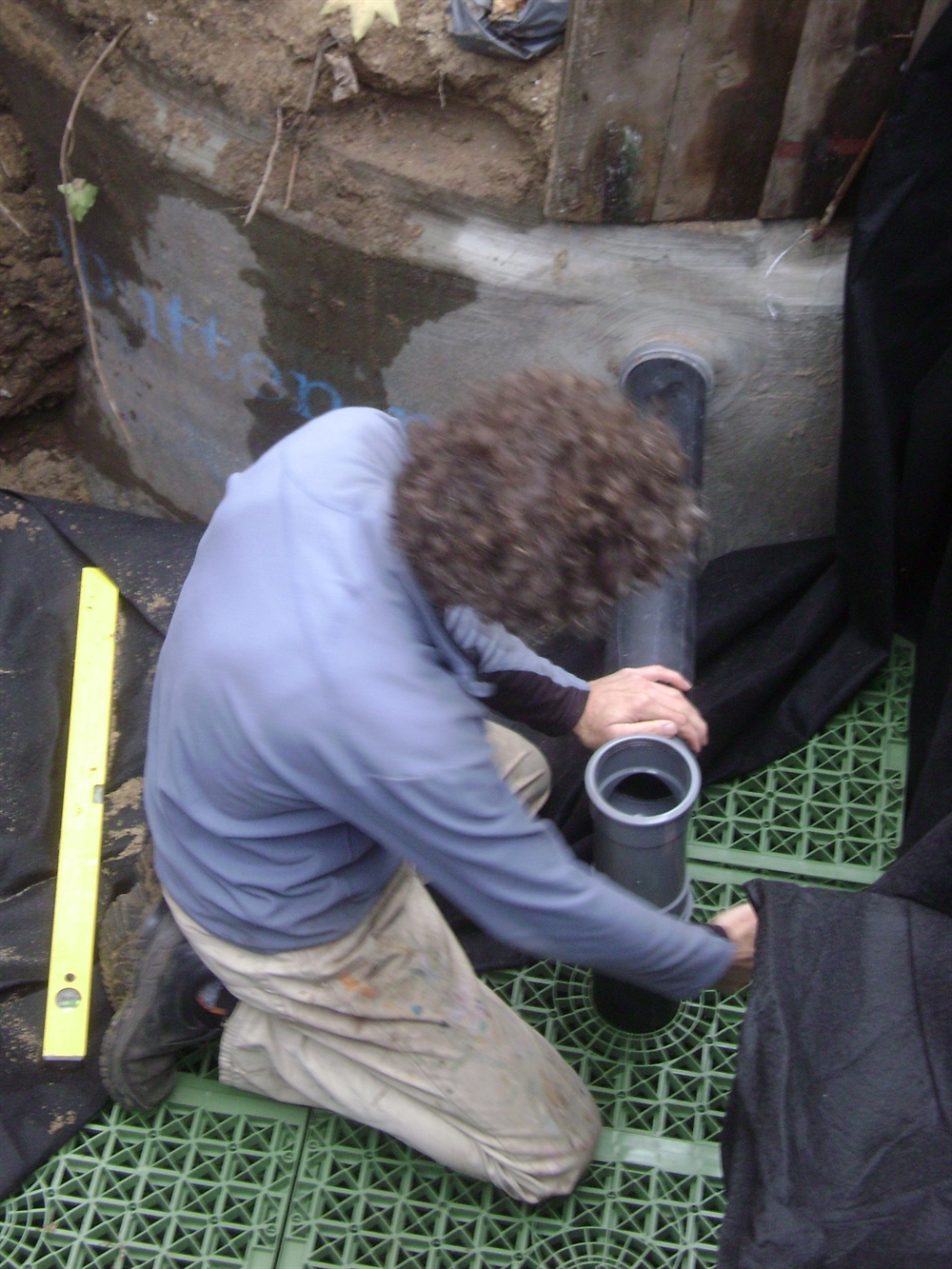Dobbelmannklooster residents collectively investing in adaptation measures
The 36 residents of the Dobbelmannklooster complex in Nijmegen are collecting rainwater from their roofs in a water reservoir. The savings on their water bill will recover their investment within ten years.
The Dobbelmannklooster complex is owned by the Woningbouwvereniging Gelderland (WBVG) housing association. The WBVG has joined forces with its tenants to make the building more sustainable. The utilisation of rainwater has proven to be a sustainability goal within easy reach of the residents.
Together, the residents have disconnected 400 m2 of roof surface from the sewer system. The work was combined with the removal of an old oil tank from the backyard. The space vacated by the oil tank has been used for a reservoir collecting rainwater.

Image: Residents disconnecting roof surface from the sewer system.
Water from the roof flows through rainwater downspouts and underground pipes to infiltration crates, from which it can infiltrate into the soil. The pipes to the infiltration crates are connected to a rainwater collection reservoir. Residents of the building can use the water in the reservoir for several purposes, for example, flushing toilets.

Image: Residents installing the rainwater reservoir and infiltration crates.
By disconnecting their downspouts, the residents are reducing the pressure on the sewer system, allowing rainwater to infiltrate into the soil, and cutting down their drinking water consumption during the summer months.
Rainwater reservoir
The reservoir has a capacity of 8 m3. Its volume has been dictated by the space and financial resources available. The pipe system can be expanded in order to maximise the use of rainwater from the reservoir.

Image: The rainwater reservoir is hoisted into the space left by the oil tank.
In April 2019, the pipe system was already expanded to toilets within the building complex. The more that rainwater is used, the shorter the payback time for the investment.
Costs and payback period
The residents have carried out a great deal of work themselves, with the assistance of a plumber and a supplier. The investment totalling EUR 8,500 has been covered from a fund set up by the tenants. The amount comprises the material costs of the installation, the piping, the infiltration crates, and the services provided such as hiring a contractor.
The municipality of Nijmegen has provided a grant of EUR 3,500 (10 euros for each square metre of disconnected roof surface). In theory, the disconnected roof surface will yield 350 m3 of rainwater per annum. At a rate of some EUR 1.50 for 1 m3 of water, residents will save EUR 500 annually. Consequently, the investment will pay for itself within ten years.
Lessons to be learned from the process
-
A determined core group of residents is essential for the project to succeed.
-
Venturing beyond the policy frameworks of the government and the owner is advisable.
-
Collaboration with a (local) plumber is advisable. He can realise the “difficult” couplings in the pipes and serve as a back-up for maintenance work, if competent residents are away on holiday or have moved.
-
Realising rainwater collection in collaboration with neighbours and taking matters into one’s own hands will considerably shorten the payback time of a rainwater collection unit.
-
Good information provision by the government is important.
Practical lessons to be learned
-
The use of rainwater to flush toilets takes precedence over its use as water to wash in.
-
Constructing a model unit (reservoir size / infiltration crates) beforehand is advisable.
-
Rainwater must be kept free of organic material (e.g., leaf waste, walnuts).
-
The soil must be tested for infiltration speed. Such tests can easily be conducted by residents.
-
Measurements (cheap wireless measuring points) can be helpful in boosting pro-active municipal response to local downpours.
-
There is still a great deal to be explored (e.g., the role of geo textiles surrounding the infiltration crates, degree of rainwater pollution).
-
A well filter is essential.
-
The volumes collected are insufficient for watering gardens. It would be better to plant gardens with drought-resistant plants.
-
Joining in with municipal bulk purchases (e.g., crates) can lower the cost price.
Contact person
Frits Ogg
Stichting Beheer Dobbelmannklooster
fritsogg@gmail.com
024 3565588
